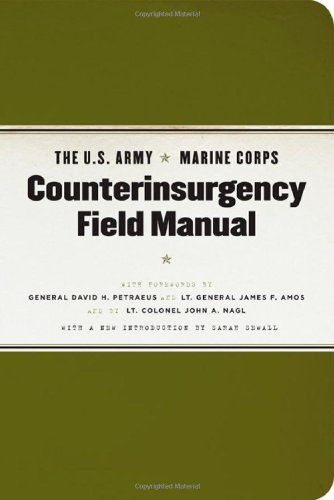
The U.S. Army/Marine Corps Counterinsurgency Field Manual
کتاب های مرتبط
- اطلاعات
- نقد و بررسی
- دیدگاه کاربران
نقد و بررسی

September 1, 2007
In 1943, as part of its global World War II deployments, the United States stationed troops in Iraq. The brief handbook issued then, and now offered in facsimile, shows the army apprising troops of what to expect in Iraq and sketches its ethnic and religious makeup. Its primary purpose was to foster caution in interacting with a complex society with which Americans were unfamiliar. Sixty years later, the U.S. Army returned to Iraq, this time to defeat the Iraqi armed forces and assist in installing a new regime. The defeat of the Iraqi forces was quick and thorough, but the creation of a new political order was not. Faced with an insurgency in the wake of the conventional campaign, the United States floundered, hoping that it could translate its conventional superiority into success against an enemy that fought an unconventional war. The new "Counterinsurgency Field Manual" attempts to offer a formula for success. Its basis is that counterinsurgency warfare is a political struggle that has a military component, rather than a strictly military campaign. Counterinsurgency war is a struggle for legitimacy; the host government and its American allies must provide security and at least basic services in order to earn the population's confidence. The insurgents need merely to undermine the government by whatever means they can. The currently operative manual explains that American service personnel must be able quickly and precisely to calibrate their actions to a given situation. Ironically, our armed forces today find themselves needing the type of cultural sensitivity that was considered an obvious ingredient for success in 1943. It is likely that the new field manual will be in use for some time, and that the World War II instructions will often be cited as a comparison to it. Both are recommended for academic and public libraries.Richard Fraser, formerly Coll. of Physicians of Philadelphia
Copyright 2007 Library Journal, LLC Used with permission.

























دیدگاه کاربران